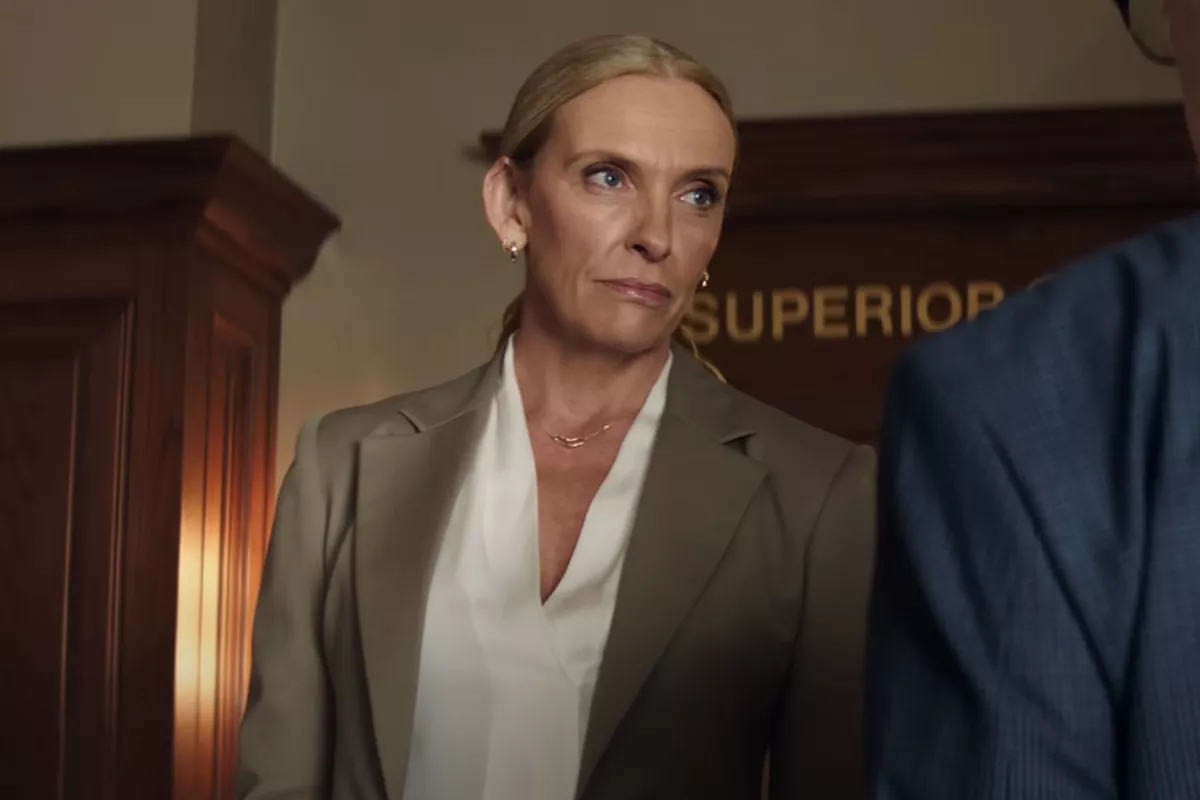Nicholas Hoult and Toni Collette Discuss the Ambiguous Ending of Juror #2
Warning: This article contains spoilers for Juror #2.
In Clint Eastwood’s latest film, Juror #2, Nicholas Hoult and Toni Collette reunite on screen for the first time since About a Boy, but this time with a twist—they began filming with the movie’s ambiguous final scene. Although Hoult had already been working on the film, Collette’s first day on set involved shooting this climactic moment, which would eventually leave audiences wondering.
Reflecting on the experience, Collette described the intensity of the day, explaining how working under Eastwood’s direction felt both intimidating and inspiring. “It’s Clint Eastwood. I admire him so much. I have so much respect for him—he’s a living legend, an iconic cinematic figure,” she told Entertainment Weekly. “And then, suddenly, you’re on his set.”
The closing scene unfolds with quiet suspense. Collette’s character, prosecutor Faith, begins to realize that Justin, the juror played by Hoult, might be the very person responsible for the murder at the center of her case—although the death was accidental. As Faith stands at Justin’s door, staring him down without a word, the screen abruptly fades to black, leaving viewers uncertain of her intentions. Is she there to arrest him, confront him, or simply deliver a final judgment through silence?
According to Hoult, Eastwood intended for the ending to be left open to interpretation, encouraging audiences to question what would happen next. “Clint likes to not over explain,” Hoult shared. “One of the things that makes him masterful as a director is that he gives space for the audience to think and work a little bit for themselves.”
To enhance the mystery, Eastwood shot the scene in multiple ways, each offering a slightly different tone. “We did a couple of different versions,” Hoult said. “One was just [Toni], one where [Toni] had police officers on either side, one where there were police cars behind her. Different elements could lead to different conclusions.” Hoult believes the more ambiguous takes were ultimately more compelling, allowing viewers to form their own interpretations about what might come next and what justice should look like.

Despite the film’s open-ended finish, both Hoult and Collette had a clear vision of what their characters felt in that moment. For Collette, Faith’s dedication to justice drives her forward, despite the personal costs. “This woman’s dedicated her entire life to justice and doing the right thing,” Collette explained. “There’s so much at stake for her. There’s actually a lot that will be compromised, and she may lose a lot, but she still has to do the right thing. That’s just an innate part of her.”
Hoult, on the other hand, sees Justin as a character whose world is falling apart as he faces the possibility of exposure. “Justin sees his world crumbling,” he said. “He is grasping at straws and panicked. Like, ‘Well, hang on, what am I going to do here? Can I put out this fire?’ His brain’s going into overdrive along with panic.”
Justin’s guilt is a complex one, laced with doubt. The incident that caused Kendall Carter’s death happened on a dark night after Justin’s wife suffered a miscarriage. Distracted, he believes he might have hit a deer but later suspects it could have been Kendall. As a juror in her murder trial, he gradually realizes the disturbing possibility that he was responsible, yet he holds onto the hope that it could all be a tragic coincidence. Hoult explains, “I was always playing with the idea that he still believed it could not have been him… as a human, you always give yourself any possible little glimmer of out that you could to help yourself sleep at night.”
Nicholas Hoult and Toni Collette Discuss the Ambiguous Ending of Juror #2
The film further explores Justin’s internal struggle over whether to confess, even though doing so could destroy his life and his new family. A deleted scene originally underscored this inner conflict more explicitly: at one point, Justin goes to the police station to turn himself in, only to back out after witnessing something that terrifies him. “That was an interesting idea—that he instantly had that reaction of like, ‘Okay, I should go and talk about this and explain it.’ And is that the right thing to do? Probably. But until anyone’s in that situation, you can’t say what you’d do. It’s nearly impossible.”
Juror #2 invites viewers into this moral gray area, where questions of guilt, justice, and the limits of memory take center stage. As Eastwood leaves the ending shrouded in mystery, the audience is left to decide what fate awaits both Faith and Justin.
Juror #2 is now playing in theaters.
Latest new from Owl Fashion Shop
